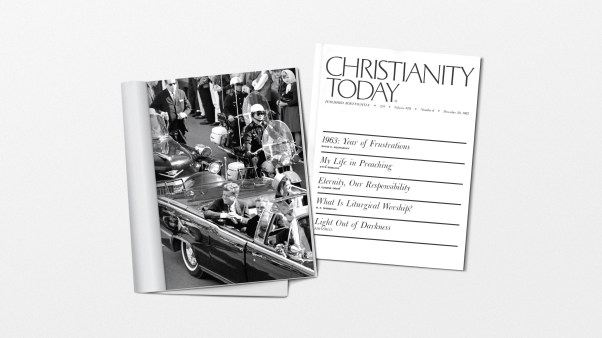The caution, at first, sounds unnecessary.
“If I’ve seen one church demoralized by excessive reliance on an endowment fund, I’ve seen at least twenty,” declared one denominational executive. “It’s a guaranteed way to pauperize a congregation.”
Many churches are tempted to dismiss this caution. Who wouldn’t want the “problem” of a large endowment?
A growing number of churches have been actively encouraging members to remember the congregation in their wills. So many have been so successful that it’s time to ask, “What if you encourage members to leave a tithe or more of their estate to your church, and they do it?”
A large bequest sounds wonderful. But horror stories abound of congregations that became dependent on the dead to pay the bills incurred by the living, thus draining the church’s vitality.
Who controls the endowment fund?
One congregation, for example, decided to construct a new sanctuary. They raised one-fourth of the cost in cash, received pledges over three years to pay for another fourth, and arranged a twelve-year mortgage to cover the balance. The income from the three-year pledges met the mortgage payments in the first years following completion of the new sanctuary.
During the third year, a committee was appointed to plan a new campaign to secure pledges for the second three years of mortgage payments. About that time, the committee received news that a member had died and her bequest to the church would provide income to more than cover the mortgage payments. The committee never met again.
A few years later, the finance committee found the budget requests exceeded the anticipated level of giving. No problem. They took the remainder of the bequest income to balance the budget.
Three years later the finance committee checked the terms of the bequest, discovered no restrictions on its use, and decided to “borrow” from the principal to cover a deficit in the congregational operating budget.
Ten years later none of the money borrowed from the endowment had been returned, and 75 percent of the principal had been used to meet local expenses.
The first moral from that story, which has been duplicated in many other congregations, is: Do not tempt the finance committee to balance the local operating budget by turning to the endowment.
The second moral: Dependency can be contagious, and one generation of finance committee members can catch it from a previous generation.
The third moral: When a committee borrows from one fund to cover a deficit in another, it’s easy not to return the funds, unless there’s some form of external accountability.
What is the alternative?
In response, most denominations have created foundations to handle bequests and other gifts, and they encourage members to leave their money to that foundation rather than to a local church. That concept, however, has met with less than overwhelming support because the vast majority of church members feel a stronger attachment to a particular congregation than they do to a denomination.
But during the past fifteen years, hundreds of congregations have identified a way to encourage a larger number of bequests while minimizing the negative effects of a large endowment. Their solution? Creating their own foundation or trust with its own set of trustees to administer the funds.
Usually this takes the form of a separate legal corporation, but sometimes it is created under the legal umbrella of that congregation’s incorporation as a nonprofit religious organization. In either case, the key is that no one can simultaneously be a trustee of the foundation and hold a policy-making position or fiduciary office in that congregation.
Typically the trustees of the foundation serve staggered terms of five, seven, or nine years. With such long terms in office, the trustees can develop the expertise and policies necessary for the good stewardship of the funds they administer. Among the benefits of a local-church foundation:
The foundation eliminates the temptation of the finance committee to act irresponsibly. Since the foundation receives and administers bequests, special gifts, and memorials, those items remain outside the congregation’s agenda, and the boards and committees of the congregation can concentrate on ministry, mission, stewardship, and outreach.
As a separate body, the foundation has its own reporting system. Thus, the finance committee’s report does not show a huge balance in investments at the end of the fiscal year – a figure that often discourages giving or encourages plundering. With the endowment funds administered/ invested, and controlled by the foundation rather than the finance committee, they remain outside the congregation’s annual statement of financial surpluses or investments.
Since these investments are not controlled directly by the congregation, the “Why should I increase my giving when this church has hundreds of thousands of dollars in the bank?” question is largely diminished.
As a separate legal entity, a foundation has an easier time establishing and maintaining restrictions on the use of these funds. Frequently the foundation allocates most of the income to missions, scholarships, and matching grants for launching new ministries or for maintenance of the property. If the building needs a new roof, the foundation may contribute one dollar for each two dollars given by members.
This arrangement makes it difficult for the finance committee to “borrow” from the endowment fund to offset the summer slump or to pay for unexpected repairs to the building that are not covered by the budget. Through the matching-fund concept, the endowment can thus stimulate rather than stifle responsible stewardship.
The responsible actions of the foundation trustees may encourage members to remember the foundation in their wills, secure in the knowledge their funds will be used wisely.
When properly handled, those gifts of love can continue to stimulate, challenge, and enrich the congregation long after the givers are gone. There can never be too much of that good effect.
– Lyle E. Schaller
Yokefellow Institute
Richmond, Indiana
Leadership Spring 1988 p. 88-9
Copyright © 1988 by the author or Christianity Today/Leadership Journal. Click here for reprint information on Leadership Journal.









